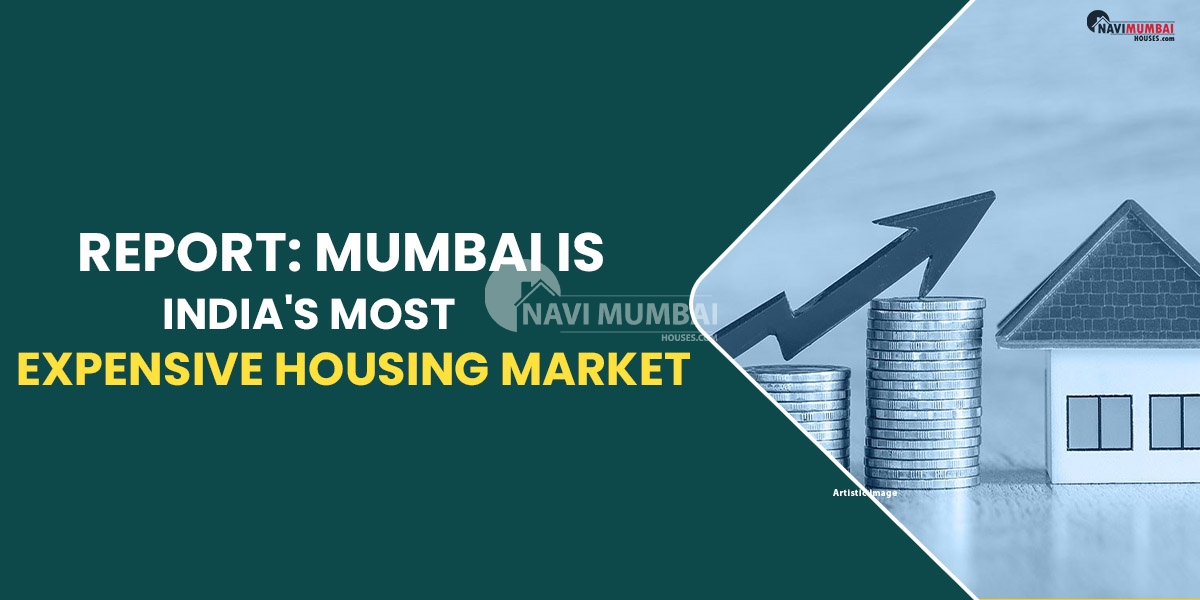
Report: Mumbai Is India’s Most Expensive Housing Market
Mumbai Expensive Housing Market- According to the survey, the cheapest housing markets are in Ahmedabad, Kolkata, & Pune.
August 17, 2023: According to Affordability Index study, Mumbai has the highest ratio of home prices at 55%. Mumbai saw a two-percentage point improvement in the ratio from 53% in H1 2022. Higher home loan rates have decreased affordability so far in 2023 across all markets. Ahmedabad has the most inexpensive housing market among the top eight cities, according to the Affordability Index assessment, with a ratio of 23%, followed by Pune & Kolkata at each 26%.
Are you looking for new projects in matunga?
The Equated Monthly Instalment (EMI) to Income Ratio for a typical household is tracked by the affordability index. The Reserve Bank of India (RBI) dropped Repo rates to historic lows during the epidemic, which led to a steady improvement between 2010 and 2021 in all eight of India’s major cities, according to the research. Since then, the central bank has increased the Repo rate by 250 basis points to combat rising inflation. This has since increased the EMI load by 14.4% and reduced affordability by an average of 2.5% across cities. The demand, however, has not decreased and has continued to be at the multi-year highs witnessed in H1 2023.
In addition, the economic fundamentals have continued to demonstrate strength, and the inflation prediction is expected to stay under the 6% upper tolerance range, therefore the RBI has refrained from hiking rates in the previous three consecutive Monetary Policy Meetings.
Index of affordability for eight Indian cities
| City | EMI to Income Ratio | |||||
| 2010 | 2019 | 2020 | 2021 | 2022 | H1 2023 | |
| Mumbai | 93% | 67% | 61% | 52% | 53% | 55% |
| NCR | 53% | 34% | 38% | 28% | 29% | 30% |
| Bengaluru | 48% | 32% | 28% | 26% | 27% | 28% |
| Pune | 39% | 29% | 26% | 24% | 25% | 26% |
| Hyderabad | 47% | 34% | 31% | 28% | 30% | 31% |
| Ahmedabad | 46% | 25% | 24% | 20% | 22% | 23% |
| Chennai | 51% | 30% | 26% | 24% | 27% | 28% |
| Kolkata | 45% | 32% | 30% | 25% | 25% | 26% |
Chart of EMI to household income
The Affordability Index displays the percentage of a household’s income required to make monthly housing installment (EMI) payments in a given city. As a result, a city with a Affordability Index rating of 40% indicates that, on average, households in that city must use 40% of their income to pay the monthly installments on a home loan for that unit. As the threshold beyond which banks rarely underwrite a mortgage, an EMI/Income ratio of more than 50% is seen as unaffordable.
Assumptions
- Averages at the city level are represented by EMI, dwelling unit size, and price/sqft.
- EMI:
- 20 years are the loan term.
- 80% loan to value
- The average interest rate for house loans
- Area of housing unit: The size of a house is fixed for each city over time; however, it varies within each city depending on the choice for average size.
- Housing Cost: The city’s median cost of a home.
The most frequently performed segments are mid & premium.
The mid and premium segments (Rs 5 million to Rs 10 million and above Rs 10 million, respectively) have continuously outperformed the total market, even though the overall demand has been consistently strong. In contrast, there has been a decline in sales for tickets priced less Rs 5 million. Compared to the mid and premium group, homebuyers in this category are far more dependent on mortgage loans, making them more vulnerable to rate increases. This has significantly lowered demand in this market area. Notably, mid-segment sales have surpassed those of the inexpensive segment in recent years, but premium segment sales are quickly catching up.
Conclusion
The RBI handled the inflationary issue with exceptional skill, which has encouraged trust in the nation’s economic condition. This is also demonstrated by the fact that demand for residences is at a multi-year high and for offices has remained stable despite a general decline in office markets. The mid and premium categories of the residential market have consistently outperformed other segments, which points to a considerable change in the industry’s underlying structure. However, the 2.5% drop in affordability experienced across markets as a result of the policy rate hike by 250 basis points. Although the market has been robust so far, additional interest rate increases could have an adverse effect on homebuyers’ capacity and attitudes.
You’re looking for Projects in Kurla we have the Best Properties In Mumbai Like Ready to Move:https://navimumbaihouses.com/properties/search/kurla/
If you want daily property update details please follow us on Facebook Page / YouTube Channel / Twitter









